-
 Bitcoin
Bitcoin $107,352.1067
0.28% -
 Ethereum
Ethereum $2,429.3531
-0.90% -
 Tether USDt
Tether USDt $1.0001
-0.02% -
 XRP
XRP $2.1894
4.62% -
 BNB
BNB $646.7968
0.36% -
 Solana
Solana $147.4290
4.03% -
 USDC
USDC $0.9998
-0.02% -
 TRON
TRON $0.2756
1.52% -
 Dogecoin
Dogecoin $0.1630
1.14% -
 Cardano
Cardano $0.5612
1.18% -
 Hyperliquid
Hyperliquid $37.0580
-0.05% -
 Bitcoin Cash
Bitcoin Cash $496.9410
-0.09% -
 Sui
Sui $2.7318
3.19% -
 Chainlink
Chainlink $13.1503
0.58% -
 UNUS SED LEO
UNUS SED LEO $9.0766
0.55% -
 Avalanche
Avalanche $17.7220
1.46% -
 Stellar
Stellar $0.2380
1.52% -
 Toncoin
Toncoin $2.8439
0.38% -
 Shiba Inu
Shiba Inu $0.0...01143
1.84% -
 Litecoin
Litecoin $85.8053
1.47% -
 Hedera
Hedera $0.1483
2.70% -
 Monero
Monero $314.3240
2.12% -
 Bitget Token
Bitget Token $4.6725
0.77% -
 Dai
Dai $1.0000
0.00% -
 Polkadot
Polkadot $3.3555
1.28% -
 Ethena USDe
Ethena USDe $1.0001
0.02% -
 Uniswap
Uniswap $7.0890
2.64% -
 Pi
Pi $0.5355
-3.40% -
 Pepe
Pepe $0.0...09393
1.06% -
 Aave
Aave $256.8136
-1.90%
Where can I view the trading history of Binance futures? How to calculate the handling fee?
To view your Binance futures trading history, log in, go to Futures, click Futures Overview, and select Trade History from the left sidebar.
May 11, 2025 at 03:14 pm
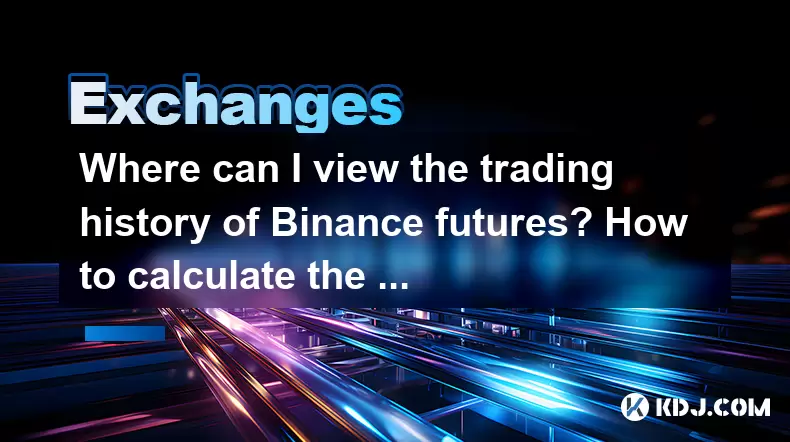
Understanding the trading history of Binance futures and calculating handling fees are crucial aspects for any trader engaging with the platform. Binance, being one of the leading cryptocurrency exchanges, provides detailed tools and resources to help users track their trading activities and understand the fees involved. In this article, we will explore where you can view your trading history on Binance futures and how to calculate the handling fees associated with your trades.
Where to Find Your Trading History on Binance Futures
Binance offers a user-friendly interface that allows traders to easily access their trading history. To view your trading history for futures, follow these steps:
- Log into your Binance account and navigate to the Futures section.
- Once in the Futures section, click on Futures Overview located in the top menu.
- From the Futures Overview page, select Trade History from the left sidebar. This will display all your executed trades, including the date, pair, type, price, amount, and total.
The Trade History page provides a comprehensive view of your trading activities, allowing you to filter and sort the data according to your needs. You can filter by symbol, type of order, and date range to get a more detailed analysis of your trading performance.
Understanding the Data in Your Trading History
The trading history on Binance futures includes several key pieces of information that are essential for traders:
- Date and Time: This shows when the trade was executed.
- Pair: The trading pair involved in the transaction.
- Type: Indicates whether the trade was a buy or sell.
- Price: The price at which the trade was executed.
- Amount: The quantity of the asset traded.
- Total: The total value of the trade.
By analyzing this data, traders can gain insights into their trading patterns, assess their performance, and make informed decisions for future trades.
How to Calculate Handling Fees on Binance Futures
Handling fees, also known as trading fees, are charges that Binance applies to each trade executed on its platform. Calculating these fees is essential for understanding the total cost of your trades. Binance uses a maker-taker fee model for its futures trading, where the fees vary based on your trading volume and whether you are a maker or a taker in the trade.
To calculate the handling fee on Binance futures, follow these steps:
- Determine your trading volume tier: Binance categorizes users into different tiers based on their 30-day trading volume. Each tier has a different fee rate. You can find your current tier and the corresponding fee rates in the Fee Schedule section of your account.
- Identify whether you are a maker or a taker: A maker order adds liquidity to the order book, while a taker order removes liquidity. Maker fees are generally lower than taker fees.
- Calculate the fee: Multiply the trade amount by the applicable fee rate. For example, if you are a maker and your fee rate is 0.02%, and you trade 100 units of a futures contract, the fee would be 100 0.0002 = 0.02 units of the contract.
Example of Fee Calculation
Let's consider an example to illustrate how to calculate the handling fee on Binance futures:
- Suppose you are in the VIP 0 tier, with a maker fee of 0.02% and a taker fee of 0.04%.
- You place a maker order to buy 10 BTCUSDT futures contracts at a price of $30,000 per contract.
- The total trade value is 10 * $30,000 = $300,000.
- The handling fee for this trade would be $300,000 0.0002 = $60.
Accessing Detailed Fee Information
To get a detailed breakdown of the fees applied to your trades, you can use the Transaction History section on Binance:
- Navigate to the Futures section and click on Futures Overview.
- From the left sidebar, select Transaction History.
- Here, you will find a list of all your transactions, including the fees charged for each trade. You can filter the data by symbol, type, and date range to focus on specific trades.
Using the Binance API for Advanced Fee Analysis
For traders who require more advanced analysis of their trading fees, Binance offers an API that can be used to retrieve detailed transaction data. Here’s how you can use the Binance API to analyze your fees:
- Register for a Binance API key: Go to the API Management section in your Binance account settings and create a new API key.
- Use the API to fetch transaction data: Use the
GET /fapi/v1/userTradesendpoint to retrieve your trade history. You can specify parameters such assymbol,startTime, andendTimeto filter the data. - Analyze the data: Once you have the transaction data, you can calculate the fees for each trade using the fee rates applicable to your trading tier.
Frequently Asked Questions
Q: Can I reduce my trading fees on Binance futures?
A: Yes, you can reduce your trading fees by increasing your trading volume to move up to a higher VIP tier, which offers lower fee rates. Additionally, using BNB (Binance Coin) to pay for fees can further reduce your costs by an additional 10%.
Q: How often does Binance update the trading history?
A: Binance updates the trading history in real-time, ensuring that you have access to the most current data as soon as your trades are executed.
Q: Is there a way to export my trading history from Binance futures?
A: Yes, you can export your trading history by using the Export Data feature available in the Trade History section. You can choose to export the data in CSV format for further analysis.
Q: Can I see my unrealized profit and loss in the trading history?
A: No, the trading history on Binance futures shows only realized trades. To view your unrealized profit and loss, you should check the Positions section in the Futures Overview.
Disclaimer:info@kdj.com
The information provided is not trading advice. kdj.com does not assume any responsibility for any investments made based on the information provided in this article. Cryptocurrencies are highly volatile and it is highly recommended that you invest with caution after thorough research!
If you believe that the content used on this website infringes your copyright, please contact us immediately (info@kdj.com) and we will delete it promptly.
- Pi2Day Disappointment: Why the Pi Network Community Is Losing Faith
- 2025-06-28 18:30:12
- Silver Lining: Robert Kiyosaki's July 2025 Silver Prediction
- 2025-06-28 18:30:12
- Gotta Go Fast! Sonic Speeds into Magic: The Gathering Secret Lair
- 2025-06-28 18:50:12
- Bitcoin Price Swings: Navigating Volatility and Predicting the Future
- 2025-06-28 19:10:14
- Meme Coins in 2025: Will Shiba Inu Make a Comeback?
- 2025-06-28 19:30:12
- Pi Network's AI App Studio and Staking Utility: Revolution or Red Herring?
- 2025-06-28 19:30:12
Related knowledge
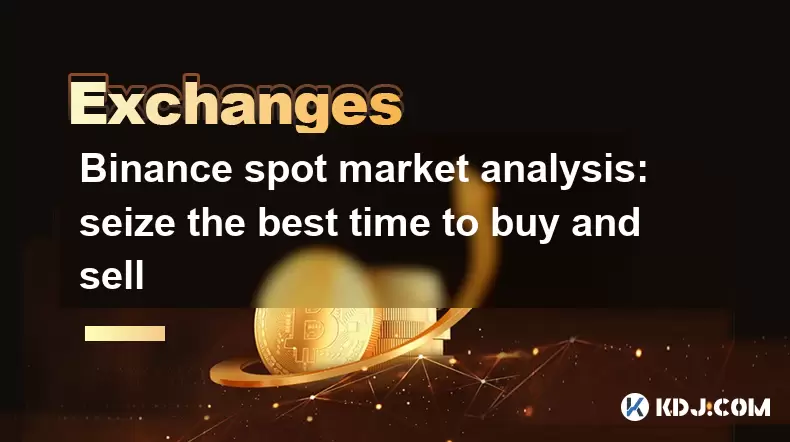
Binance spot market analysis: seize the best time to buy and sell
Jun 19,2025 at 04:56pm
Understanding the Binance Spot MarketThe Binance spot market is one of the most popular platforms for cryptocurrency trading globally. It allows users to trade digital assets at current market prices, making it essential for traders aiming to buy low and sell high. Unlike futures or margin trading, spot trading involves direct ownership of the asset aft...
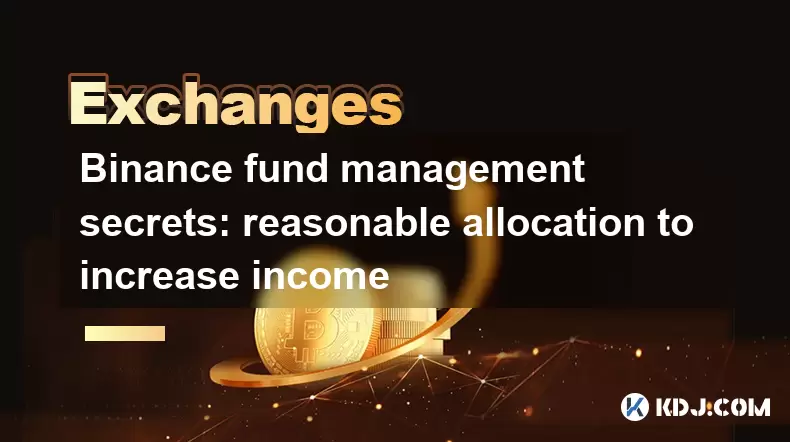
Binance fund management secrets: reasonable allocation to increase income
Jun 22,2025 at 02:29pm
Understanding Binance Fund ManagementBinance fund management involves strategic allocation of your cryptocurrency assets to optimize returns while managing risk. The key to successful fund management lies in understanding how different investment options on the Binance platform can be utilized to create a diversified portfolio. This includes spot tradin...
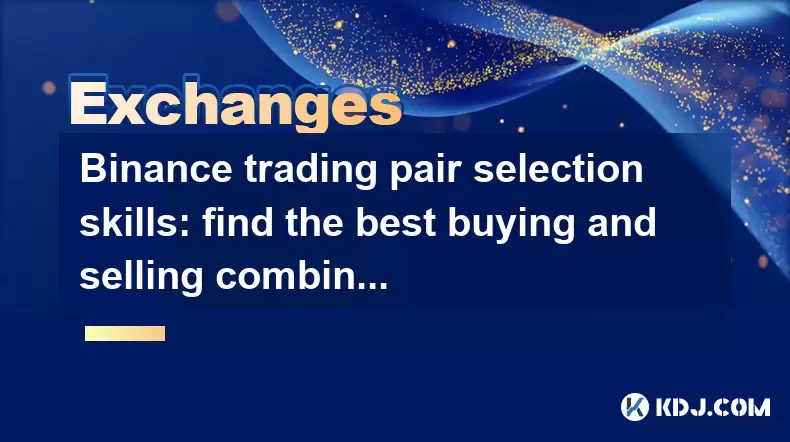
Binance trading pair selection skills: find the best buying and selling combination
Jun 23,2025 at 02:49am
Understanding the Basics of Trading Pairs on BinanceBefore diving into trading pair selection skills, it's essential to understand what a trading pair is. On Binance, a trading pair refers to two cryptocurrencies that can be traded against each other. For example, BTC/USDT means Bitcoin is being traded against Tether. Each trading pair has its own liqui...
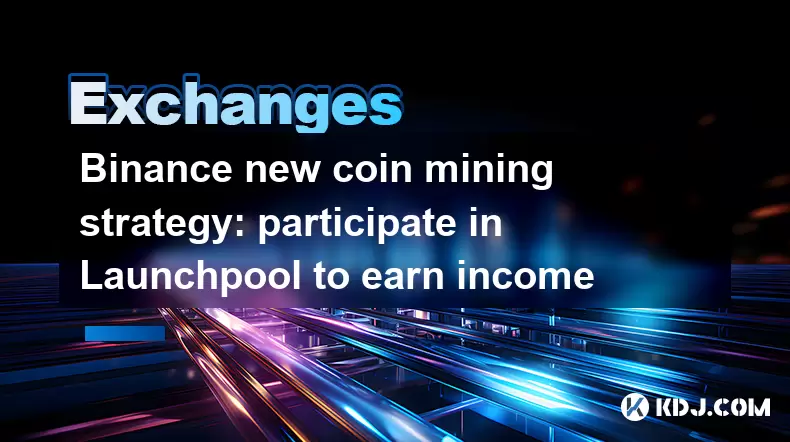
Binance new coin mining strategy: participate in Launchpool to earn income
Jun 23,2025 at 11:56am
What is Binance Launchpool and how does it work?Binance Launchpool is a feature introduced by the world’s largest cryptocurrency exchange, Binance, to allow users to earn new tokens through staking. This platform enables users to stake their existing cryptocurrencies (such as BNB, BUSD, or other supported assets) in exchange for newly launched tokens. T...
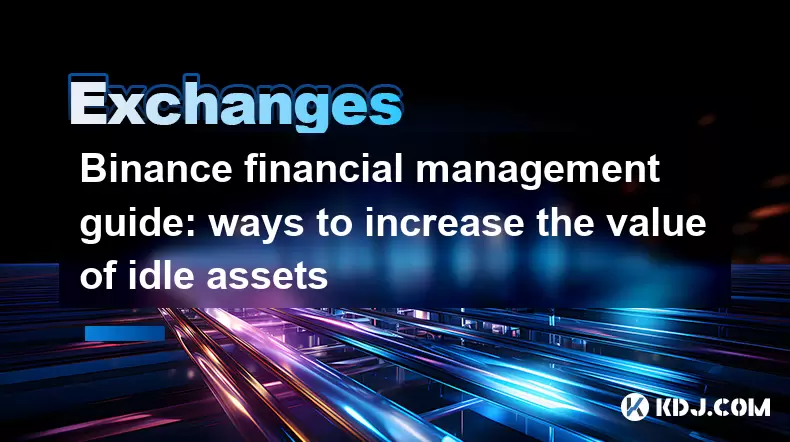
Binance financial management guide: ways to increase the value of idle assets
Jun 19,2025 at 11:22pm
Understanding Idle Assets in the Cryptocurrency SpaceIn the fast-paced world of cryptocurrency, idle assets refer to digital currencies that are not actively being used for trading, staking, or yield farming. Holding these funds in a wallet without utilizing them means missing out on potential growth opportunities. Binance, as one of the leading platfor...
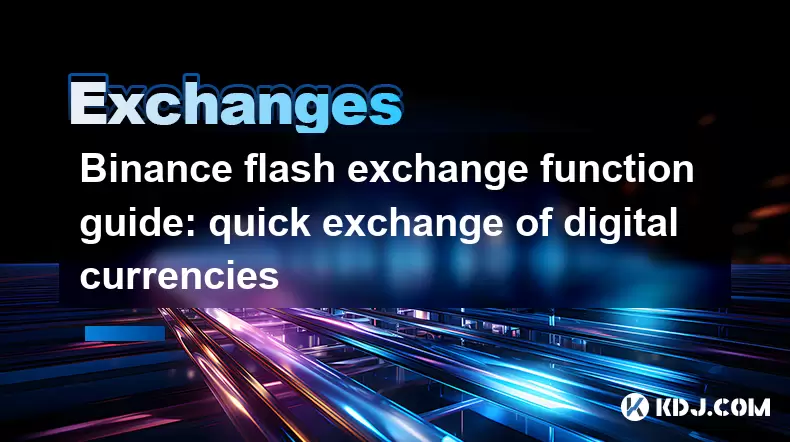
Binance flash exchange function guide: quick exchange of digital currencies
Jun 23,2025 at 12:29pm
What is the Binance Flash Exchange Function?The Binance Flash Exchange function is a powerful tool designed to allow users to instantly swap between supported cryptocurrencies without the need for placing traditional buy/sell orders. This feature simplifies the trading process by offering a direct exchange mechanism, eliminating the requirement to conve...

Binance spot market analysis: seize the best time to buy and sell
Jun 19,2025 at 04:56pm
Understanding the Binance Spot MarketThe Binance spot market is one of the most popular platforms for cryptocurrency trading globally. It allows users to trade digital assets at current market prices, making it essential for traders aiming to buy low and sell high. Unlike futures or margin trading, spot trading involves direct ownership of the asset aft...

Binance fund management secrets: reasonable allocation to increase income
Jun 22,2025 at 02:29pm
Understanding Binance Fund ManagementBinance fund management involves strategic allocation of your cryptocurrency assets to optimize returns while managing risk. The key to successful fund management lies in understanding how different investment options on the Binance platform can be utilized to create a diversified portfolio. This includes spot tradin...

Binance trading pair selection skills: find the best buying and selling combination
Jun 23,2025 at 02:49am
Understanding the Basics of Trading Pairs on BinanceBefore diving into trading pair selection skills, it's essential to understand what a trading pair is. On Binance, a trading pair refers to two cryptocurrencies that can be traded against each other. For example, BTC/USDT means Bitcoin is being traded against Tether. Each trading pair has its own liqui...

Binance new coin mining strategy: participate in Launchpool to earn income
Jun 23,2025 at 11:56am
What is Binance Launchpool and how does it work?Binance Launchpool is a feature introduced by the world’s largest cryptocurrency exchange, Binance, to allow users to earn new tokens through staking. This platform enables users to stake their existing cryptocurrencies (such as BNB, BUSD, or other supported assets) in exchange for newly launched tokens. T...

Binance financial management guide: ways to increase the value of idle assets
Jun 19,2025 at 11:22pm
Understanding Idle Assets in the Cryptocurrency SpaceIn the fast-paced world of cryptocurrency, idle assets refer to digital currencies that are not actively being used for trading, staking, or yield farming. Holding these funds in a wallet without utilizing them means missing out on potential growth opportunities. Binance, as one of the leading platfor...

Binance flash exchange function guide: quick exchange of digital currencies
Jun 23,2025 at 12:29pm
What is the Binance Flash Exchange Function?The Binance Flash Exchange function is a powerful tool designed to allow users to instantly swap between supported cryptocurrencies without the need for placing traditional buy/sell orders. This feature simplifies the trading process by offering a direct exchange mechanism, eliminating the requirement to conve...
See all articles
























































































